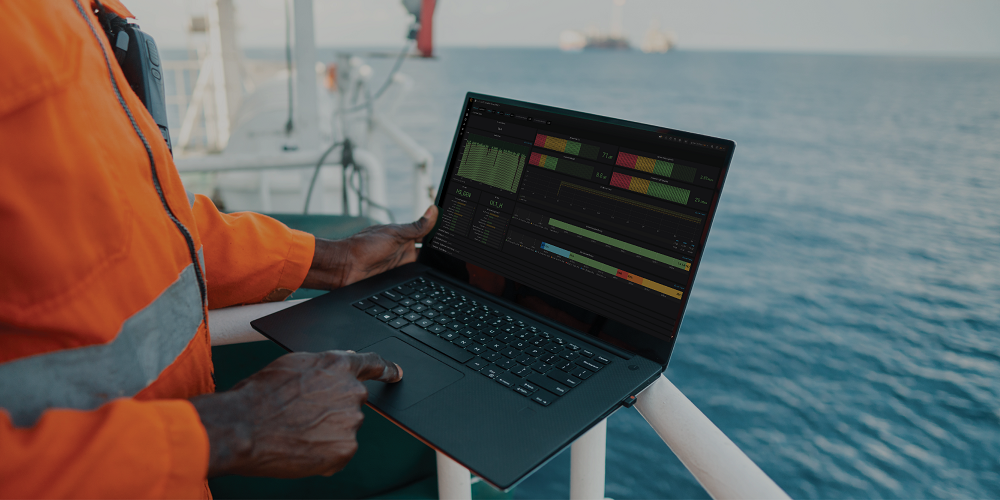Digitalizing Shipping: SATCOM is the Key

Throughout the maritime industry, it is increasingly apparent that digitalization provides performance and optimization benefits to every part of the operation, and the pace of adopting new technologies has never been faster. As a leading maritime connectivity provider, KVH has delivered two record-breaking quarters in a row for shipments of VSAT satellite communications (SATCOM) equipment. This increased demand for VSAT systems is an undeniable indicator that vessels are turning to digital processes—because the key thing needed to digitalize any operation is the flow of data. For a vessel at sea, that means fast and reliable satellite connectivity.
To realize the benefits of digitalization, here are three important facets of SATCOM:
High-speed VSAT Connectivity: The data speeds possible with today’s Ku-band VSAT networks go far beyond what is possible with legacy L-band networks. The fastest and most reliable VSAT networks feature high-throughput satellite (HTS) technology, which can provide consistent data speeds up to 20 Mbps download, and a multi-layered approach with more than one satellite covering any given region at the same time. That means a vessel that utilizes a Ku-band VSAT connectivity solution with HTS technology will have the bandwidth and data speeds for all applications to support their operational and crew welfare needs, including voyage planning, videoconferencing, security cameras, crew Internet access, and streaming HD content, all while at sea. These higher data speeds and the reliability of a multilayered HTS network are the starting points for digitalization, providing a vessel with the tools to increase operational efficiency.
Dedicated IoT Connectivity: In addition to operational VSAT connectivity, vessels also need dedicated IoT connectivity, which is crucial for maritime digitalization. A dedicated IoT terminal separates IT (information technology) from OT (operational technology, which manages physical processes and the machinery used to carry them out) and is critically important for reducing cyber risks as recommended by the IMO. IoT connectivity enables the transfer of real-time data from ship to shore so IoT service companies, multi-card service providers, OEMs, and authorities and registries can monitor performance data, conduct remote surveys, quickly identify specific equipment issues, and support high-speed video troubleshooting while the vessel is at sea, saving time and money when the vessel is in port. Download KVH’s latest case study to see how one maritime OEM uses proactive monitoring, remote service, and big data analytics to achieve improvements in product performance, cost reduction, and customer satisfaction.
Minimizing CAPEX: When choosing VSAT and IoT connectivity solutions, an important factor for maritime operators is the need to minimize capital expenditures and stay flexible in terms of commitments and contracts. Having a VSAT connectivity provider that requires no CAPEX and no commitment to a long-term plan means that changes in fleet size or the buying/selling of vessels can be handled without worrying about the airtime plan contracts or terms.

Vessels can be on their way to reaping the benefits of digitalization when operators make the right choice for VSAT and IoT. A VSAT connectivity solution from a single end-to-end provider, such as AgilePlans® by KVH, leads to real productivity benefits and no upfront CAPEX as one monthly fee covers airtime and includes free hardware, no installation or maintenance costs. For dedicated IoT connectivity, a solution such as KVH Watch® is an all-inclusive, no-commitment choice for IoT service companies and equipment manufacturers to digitalize their services with real-time data flow while separating OT and IT. These two solutions from KVH Watch are appropriate for shipyards building new vessels, existing vessels, and even older vessels that can be easily retrofitted as the ideal digital ship.
Download KVH’s Interactive eBook, “Six Critical Considerations to Gain a Competitive Advantage,” to help to identify the best SATCOM solution for your fleet.
This message is sponsored by KVH.
The opinions expressed herein are the author's and not necessarily those of The Maritime Executive.
